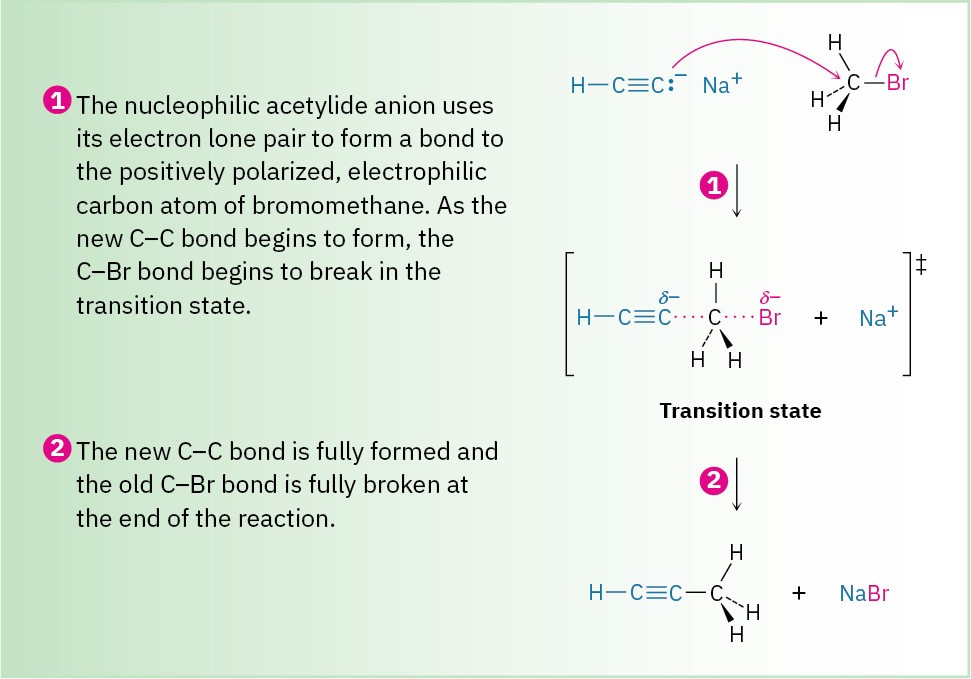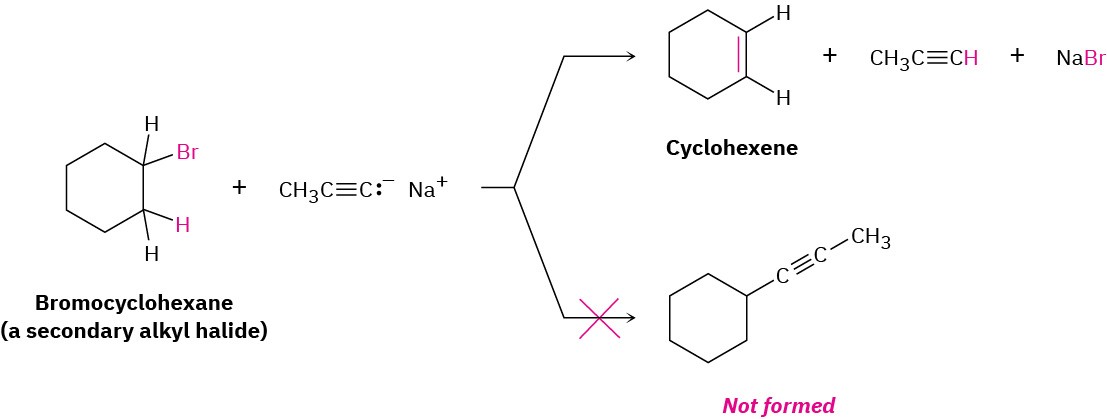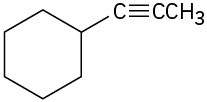9.8 Alkylation of Acetylide Anions
The negative charge and unshared electron pair on carbon make an acetylide anion strongly nucleophilic. As a result, an acetylide anion can react with electrophiles, such as alkyl halides, in a process that replaces the halide and yields a new alkyne product.

We won’t study the details of this substitution reaction until Chapter 11, but for now you can picture it as happening by the pathway shown in Figure 9.7. The nucleophilic acetylide ion uses an electron pair to form a bond to the positively polarized, electrophilic carbon atom of bromomethane. As the new C−C bond forms, Br− departs, taking with it the electron pair from the former C−Br bond and yielding propyne as product. We call such a reaction an alkylation because a new alkyl group has become attached to the starting alkyne.
Figure 9.7 MECHANISM
A mechanism for the alkylation reaction of acetylide anion with bromomethane to give propyne.

Alkyne alkylation is not limited to acetylene itself. Any terminal alkyne can be converted into its corresponding anion and then allowed to react with an alkyl halide to give an internal alkyne product. Hex-1-yne, for instance, gives dec-5-yne when treated first with NaNH2 and then with 1-bromobutane.

Because of its generality, acetylide alkylation is a good method for preparing substituted alkynes from simpler precursors. A terminal alkyne can be prepared by alkylation of acetylene itself, and an internal alkyne can be prepared by further alkylation of a terminal alkyne.

The only limit to the alkylation reaction is that it can only use primary alkyl bromides and alkyl iodides because acetylide ions are sufficiently strong bases to cause elimination instead of substitution when they react with secondary and tertiary alkyl halides. For example, reaction of bromocyclohexane with propyne anion yields the elimination product cyclohexene rather than the substitution product 1-propynylcyclohexane.

Problem 9-10
Show the terminal alkyne and alkyl halide from which the following products can be obtained. If two routes look feasible, list both.
(a)

(b)

(c)

Problem 9-11
How would you prepare cis-2-butene starting from propyne, an alkyl halide, and any other reagents needed? This problem can’t be worked in a single step. You’ll have to carry out more than one reaction.

